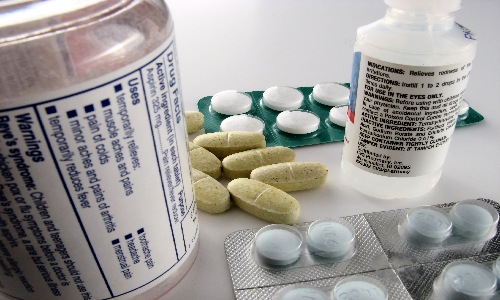| ONSET |
| Drugs in Sport: The Problems, The Solutions and The Future. |
| WHAT ARE THE ETHICAL ISSUES SURROUNDING THE USE OF DRUGS IN SPORT? |
|
|
 |
|
The abuse of drugs in sport has become an increasingly serious problem in recent decades. With the ongoing advancements in biomedical technology, drugs have become more potent, more effective and more dangerous. How did this practice come about, and what are the ethical issues surrounding it? Historical records show that performance-enhancing substances have been in use since the third century BC, when Greek physician Galen noted the popularity of stimulants and modified diets amongst some Olympic athletes. In the late 1800s, cyclists began using stimulants such as strychnine, a substance that was later attributed to several deaths and near-deaths. Amphetamine-like substances were distributed to soldiers in World War Two to improve alertness and decrease fatigue, a practice that was soon adopted by some athletes. However, amphetamine abuse led to the deaths and hospitalisation of several athletes in the 1960s. This prompted the development of anti-doping legislation and the first drug testing procedures at the Olympic Games in 1968. Since then, a range of performance enhancing drugs have been developed. But numerous testing procedures have been developed, which not only detect performance enhancers but recreational drugs as well. So why do athletes take drugs? Drugs have a variety of uses amongst athletes. A large number of preparations exist to treat legitimate medical conditions, including hormone imbalances, common colds, cancers and many other conditions. However, many of these substances also have performance-enhancing benefits, especially when used in quantities above therapeutic doses. These substances are usually banned in certain quantities, rather than being prohibited altogether. Sometimes, athletes are hindered as a result of uncontrollable situations such as injury. A range of drugs have been developed to allow athletes to recover more quickly, or to be able to return to competition while still injured. However, many banned substances are used to improve the athlete's performance beyond his or her natural capacity. This enables them to gain a competitive advantage over rivals, or to successfully compete against other substance-abusing rivals. Alternatively, recreational drugs are often used by athletes in social settings as a means of escaping the pressures of their sporting careers. (Bryson, 1990). The very nature of professional competitive sport can also motivate athletes to use performance-enhancing drugs. Some suggest that the philosophy of sport is corrupted by the fame, prstige and money that accompanies sporting success. The athlete now has to satisfy not only themselves, but also their club and team mates, their fans, their sponsors and the mass media, amongst others (Bryson, 1990). Athletes are expected to be role models, and to maintain this behaviour both on and off the competitive field. The consequences of failing to do so can take a toll on the athlete's professional and personal life. Many athletes feel the need to relieve this pressure in some way - either by enhancing their performance, or through the percieved relief provided by recreational drugs. No athlete wants to compete against another athlete who is taking drugs and thus has an unfair and illegal advantage. However, there are huge incentives for them to adopt any techniques that will bring a competitive edge. Some critics compare the use of performance-enhancing drugs to the implementation of other performance-enhancing facilities such as specialised training and advanced sporting equipment. Not every athlete will choose to utilise them, or have access to them, but is this necessarily a reason to disadvantage those who do? It is important to mention that unlike many other performance-enhancing techniques, drugs often pose huge health risks to the athletes who abuse them. Such risks may be serious long-term health problems, sometimes irreversible, and in the worst-case scenario, an athlete may die. However, this has not stopped practitioners from prescribing drugs, and it has also not prevented pharmacists from producing them with the sole intent of supplying them to athletes. Consequently, alternative methods must be developed to discourage athletes from using such harmful drugs. For example, deterrents in the forms of suspensions or permanent exclusions in the event of detection. Even the briefest investigations into the use and abuse of drugs in sport show that there are many unanswered questions, and many grey areas that can become an advantage for certain athletes, whilst disadvantaging others. Athletes are currently subject to a number of strict guidelines in order to ensure there is a relatively level playing field for all competitors. However, as long as the profit motive continues to play a role in sport, some will be encouraged athletes to go beyond legal boundaries to improve their performance. Ultimately, this is harmful to both the athlete and their sport. References: Berlioux, M. (1969) Doping, Drugs and Sport Newsletter, October, No. 25, p. 561-564 Bryson, L. Sport, Drugs and the Development of Modern Capitalism. Sporting Traditions, May, No. 2, p. 135-153 Campos, D.R., Yonamine, M. and de Moraes Moreau (2003) Marijuana as Doping in Sports. Sports Medicine, 33(6): 395-399 Moorcroft, D. (1985) Doping: The Athlete's View: Dilemmas and Choices. Olympic Review, October, No. 216, p. 634-636 Mottram, D.R. (ed.), (2003), Drugs in Sport. 3rd Edition, Human Kinetics, Champaign, Illinois. Paddick, R.J. (1990) Drugs and Sport: A Review Article Sporting Traditions, May, No. 2, p. 64-72 Schneider, A.J. (1992) Harm, Athletes' Rights and Doping Control. Proceedings. First International Symposium for Olympic Research, February, 1992, p. 164-175. World Anti-Doping Agency (2004) The 2005 Prohibited List: International Standard. |


